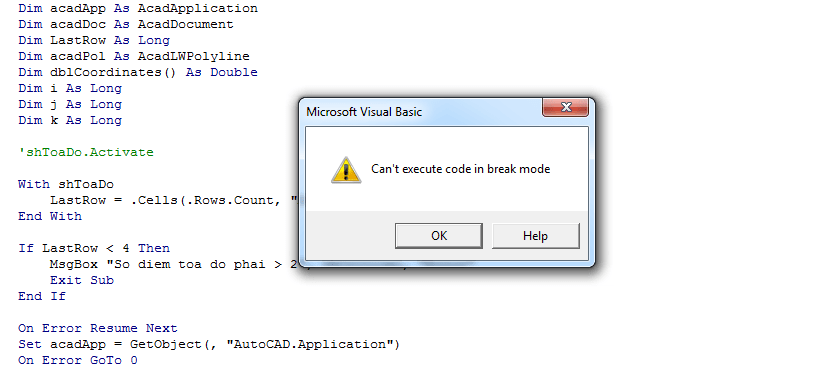
- #VISUAL BASIC EDITOR EXCEL 2016 COMPILE ERROR SYNTAX PDF#
- #VISUAL BASIC EDITOR EXCEL 2016 COMPILE ERROR SYNTAX CODE#
- #VISUAL BASIC EDITOR EXCEL 2016 COMPILE ERROR SYNTAX DOWNLOAD#
Step 2: Once the VB Editor is open click on Insert Tab and then click on modules to insert a new module. Step 1: Go to the Developer tab and click on Visual Basic to open VB Editor. And exactly after five seconds, we want a second message to pop up which says macro resumed.įollow the below steps to use Sleep Function in Excel VBA: What we are going to do in this example is we will pop up a message to the user that macro will stop for five seconds.
#VISUAL BASIC EDITOR EXCEL 2016 COMPILE ERROR SYNTAX DOWNLOAD#
Grab it now and keep it handy-you won’t regret it!ĭid you find this post helpful? Keep up with future content, webinars, and special offers by signing up for our newsletter.You can download this VBA Sleep Excel Template here – VBA Sleep Excel Template VBA Sleep Function – Example #1
#VISUAL BASIC EDITOR EXCEL 2016 COMPILE ERROR SYNTAX PDF#
Our FREE SolidWorks API Debugging Tips PDF contains descriptions and solutions for 14 other common errors. You should not encounter an error.įinally, don’t forget that this is just one of the many compile or run-time errors you can run into while programming with the SolidWorks API using VBA.

The SolutionĪt the computer where the error is occurring: If your macro can’t locate a reference, you may see the word “MISSING” before the missing reference, but not necessarily. The problem occurs when you transfer that macro to another computer that has these references in a different location.

When you create a new macro on your computer, the macro looks at these paths for the references. If you click on one of these listings, you’ll also see the file path for the type library. You can see this list if, while in the VB Editor, you go to Tools–>References.

#VISUAL BASIC EDITOR EXCEL 2016 COMPILE ERROR SYNTAX CODE#
Visual Basic for Applications, however, can’t make heads or tails of these API calls unless your code references the appropriate libraries. These are the functions you use in your code to execute commands in SolidWorks. When you write code with the SolidWorks API, you constantly use what are called “API calls”. Has this ever happened to you? Maybe not in this exact scenario, but the infamous “Compile error: Can’t find project or library” error message eventually befalls every API programmer trying to share their VBA handiwork with others. “Doesn’t run?! How can that be? It runs fine on my computer!” You ask for a screenshot of the error and this is what they send you:

Expecting an avalanche of compliments, you instead get several responses from your co-workers telling you that the macro doesn’t run. You fire up your email, attach the macro, and click Send. You’re ready to share with your co-workers. You’ve written your first “serious” SolidWorks API macro.


 0 kommentar(er)
0 kommentar(er)
